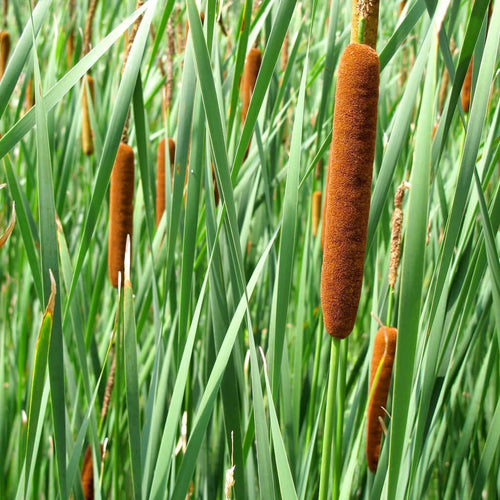There are a variety of plants that you can grow in your bog garden to make it look natural.
You can plant ferns, grasses, sedges, plants, and almost any kind of plant that loves moisture. You can plant several varieties together and design your bog garden with attractive colors and textures of plants.
When growing plants, ensure that you do not plant them too close as they appear cluttered and overcrowded once they grow up. There should be enough spacing, so each plant has its share to flaunt the fantastic colors and foliage. Arrange the plants by visualizing how you want to see them after they mature. Taller and more elaborate ones should be planted at the back.
Some of the common plants that are widely used to accentuate a bog garden are—
Cattail: They are also known as Typha and are the most common wetland plants. You can easily spot them in the wild near ponds and marshy areas. They produce flowers in late spring or early summer and ‘Cattails’ in late summer and fall. Cattails are tall plants that can add a vertical presence to your bog garden. Some people are known to consume the edible parts of this plant. They are easy to grow and form dense colonies.
Lizard’s Tail is a flowering plant native to China and Japan. It produces white flowers that look striking against the bright green foliage. This plant can grow in moist to slightly submerged conditions. The leaves are glossy and draw attention from the flowers. The flowers usually appear in the summer season.
Umbrella Plant—The scientific name of the Umbrella plant is Cyperus alternifolius. It has long, narrow leaves arranged in the form of an umbrella that gives it its name. The plant forms clumps and is ideal to act as a backdrop for small flowering plants in the front. They produce small yellow to green colored flowers.
Ruellia—They are sometimes referred to as Bluebells because of the bluish-colored flowers they bear. A semi-woody flowering plant or shrub can grow up to 2- 3 feet tall. The flowers are bluish or purple-colored, and they are trumpet-shaped. They are produced in clusters arising from the main stem. The plants bloom in July, August, and September months.
Crinum Americanum—They are also known as bog lilies and are commonly found on the edge of streams or lakes. They have a strap of long leaves and produce fragrant white-colored flowers from spring to fall. This plant is a must-have for large bogs.
Fairy Lily—Fairy Lily or Zephyr Lily produces beautiful, showy white-colored flowers. They bloom during summer and fall. Some of the same genus varieties produce striking pink and yellow flowers that are equally appealing. This plant can grow in full to partially shady areas.
These are some of the wetland plants you can grow in your bog garden. They are readily available in the nurseries and can add to the beauty of your bog garden.
Source to Buy Plants for your Bog Garden
https://www.tnnursery.net



















































